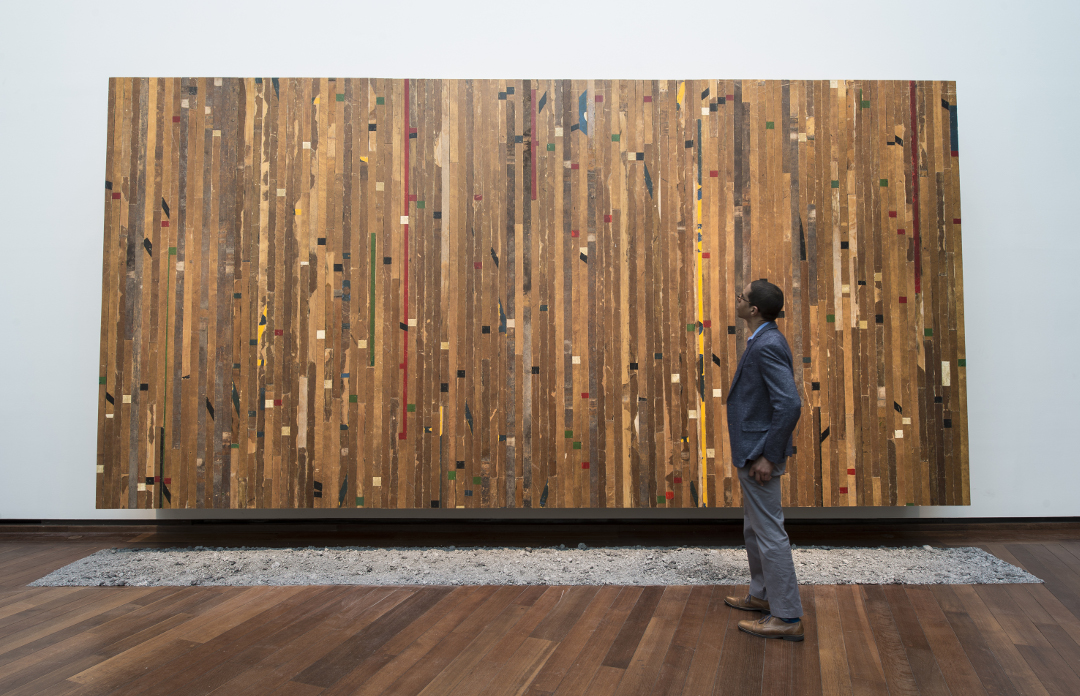
What to say when walking round the new Theaster Gates show
Become an instant expert on the artist’s National Gallery exhibition - courtesy of our monograph
Theaster Gates’s current exhibition at the National Gallery of Art in Washington opened earlier this month to wide acclaim. In the Tower: Theaster Gates: The Minor Arts sees the artist install a roof from a local decommissioned church in the museum and build a towering library of black-interest magazines. Want to know how to interpret these works and appear knowlegable when visiting the show with friends? Let our recent Theaster Gates monograph serve as your guide.
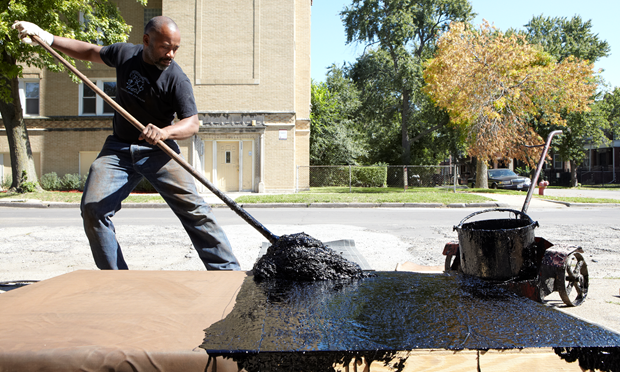
It’s better to think of Gates as a hustler than a "social practice" artist “Don’t call Gates a ‘social-practice’ artist, no matter how tempting and easy that may be,” writes Lisa Yun Lee in our Gates monograph. “It is a label with which he prefers not to be identified. A more relevant category in which to situate Gates’ practice, much of which challenges us to think beyond objects that are displayed in white-cube gallery spaces, would be the artistic practices that, since the 1960s, have built social relations by bringing art closer to everyday life, such as George Maciunas’ Food restaurant in New York’s SoHo, Tom Marioni’s The Act of Drinking Beer With Friends Is the Highest Form of Art or Rirkrit Tiravanija’s Thai food cooked on site in museums. However, unlike Gates’ work, these artistic traditions, which Nicolas Bourriaud names ‘relational aesthetics’ and art historian Claire Bishop calls ‘social forms of art’, are not situated within the history of black creativity that relies on community and collective praxis and is characterized by industrious and improvisational making it up as you go along – otherwise known as the art of the hustle!”
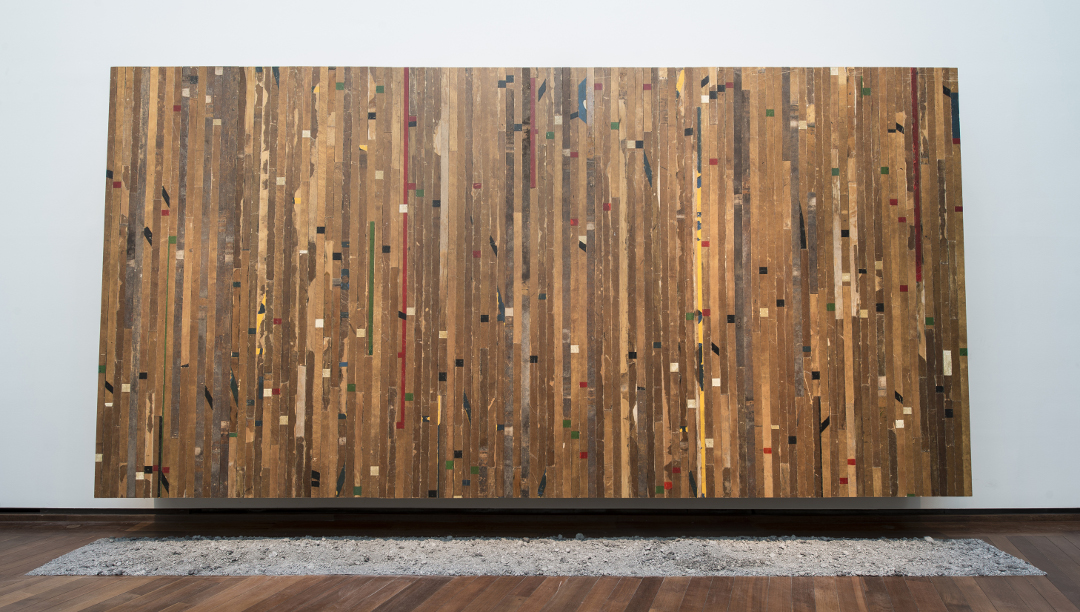
Though Gates is deeply engaged with the African-American experience, his art also plays with earlier tropes within art history “He moves between the powerful historical referent that is often part of the weightiness of black history, and a formal reference that is more often than not part of a mostly white art history,” writes Lee. “Through this interchange, the two become inextricably braided, complicit with one another.”
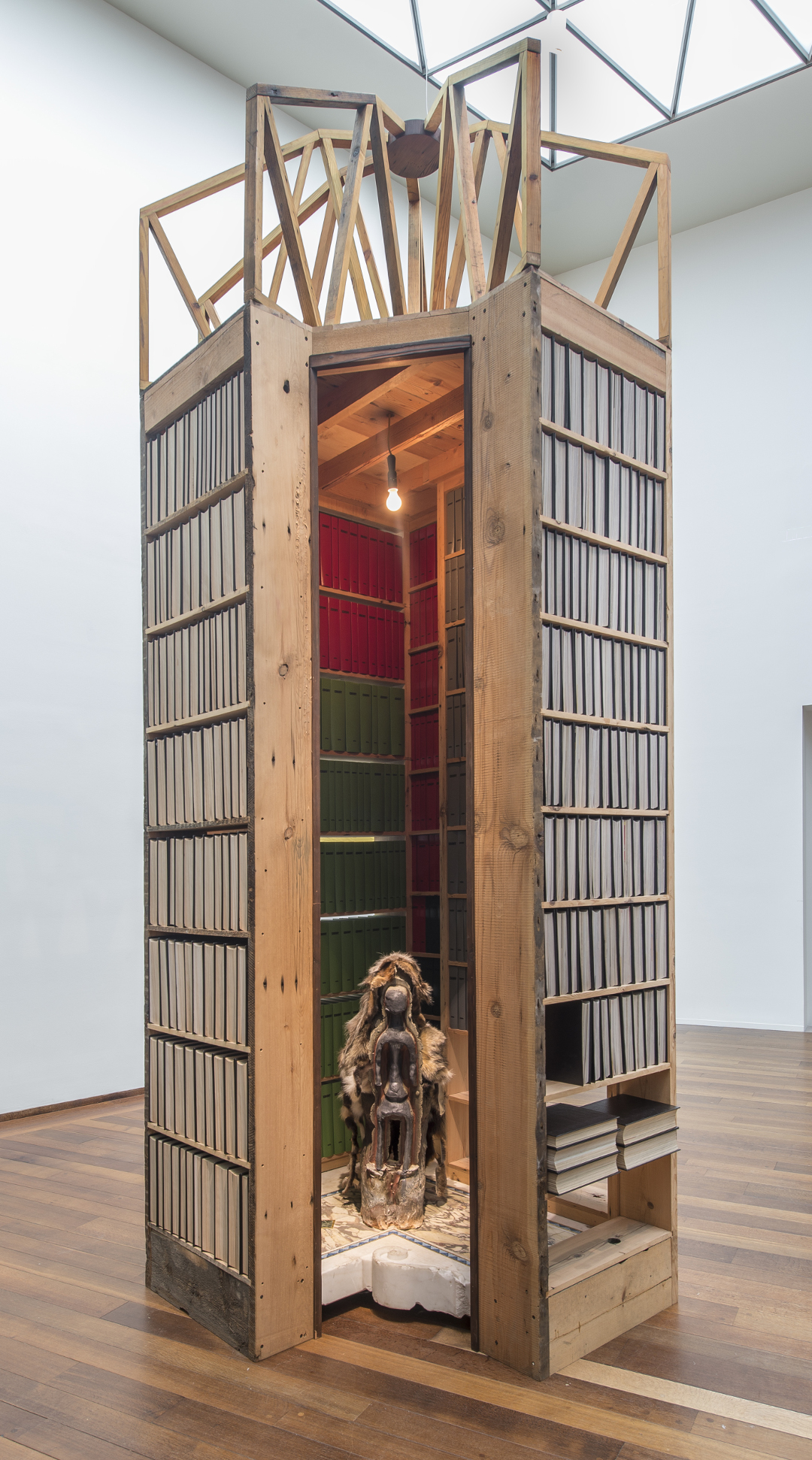
Be sure to look out for found materials and archives making their way into his works “Recently, Gates was entrusted with the archives of the Johnson Publishing Corporation, including an entire collection of Ebony and Jet magazines and the library of black entrepreneur John H. Johnson,” writes Lee. “The magazines published by the Johnson Corporation have documented and presented black lifestyle, black aspiration and achievement, as well as black history and thought to a mass public in an unrivalled manner. In a collapse of the usual silos between high, low and middlebrow culture, the reportage of the murders of Civil Rights leaders found a place in the pages next to discussions of black aesthetics and presentations of fashion, make-up and home decoration. John H. Johnson and his wife Eunice also provided space in their headquarters for visiting black dignitaries who were discriminated against and turned away from white establishments. Gates has said, ‘I could work my entire life on the Johnson Library collection and be absolutely satisfied and content.’”
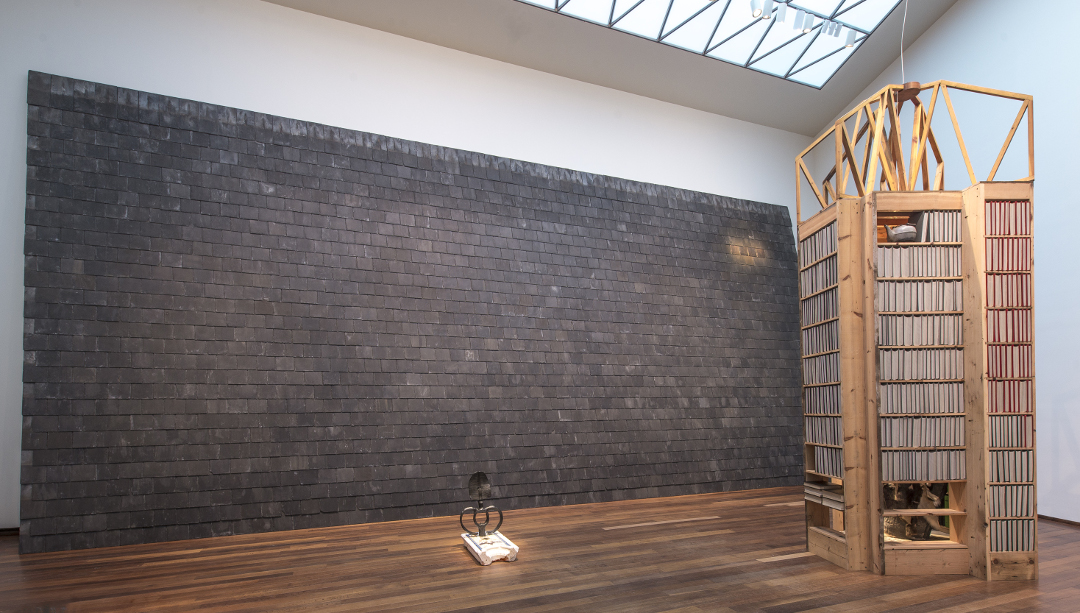
Gates’s father was a roofer, which explains some of the use of tar and slate in the artist’s work, (as well as his conscientious work ethic) “The tar he employs to mark his sculptures pays homage to his father’s labours as a roofer as the artist was growing up,” Lee explains. “Describing his early jobs roofing with his dad as ‘his first art practice’, Gates tells this story: ‘When I invited my dad to help make a tar painting, he got angry at me because of my shoddy stapling of the canvas to the frame. When I told him it didn’t matter, because no one would see the back of a painting, he got angry and chastised me for not respecting the work. ’The paintings also function as a textured exploration of blackness and a fascination with surface. Gates uses tarring mops to create the work, and while the labour of making these paintings is clear, the hand of the artist is not dominant.
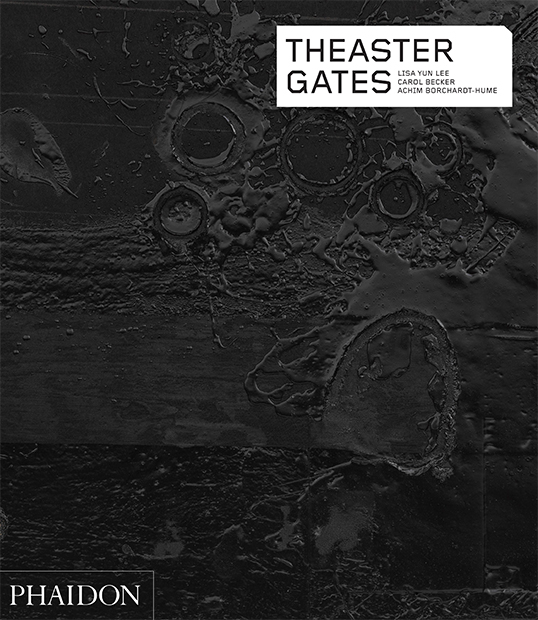
Gates’ Christian upbringing influences some of his ecclesiastical works, (though there’s a distinctly modern reference point too) “One of the spaces in the world that Gates most admires is the Rothko Chapel founded in 1971 by Houston philanthropists John and Dominique de Menil,” writes Lee. “As an intimate sanctuary available to people of every belief, the chapel was intended to be a gathering place ‘for people who are not just going to debate and discuss theological problems, but who are going to meet because they want to find contact with other people. They are searching for this brotherhood of humanity.’ The idea that individuals, through their passion, social capital and actual capital might create a context that could transform our experience of paint on canvas into one of universal humanity is a utopian project that is on a scale to which Gates can relate.”
There is of course a whole lot more to say about this important artist and you'll find it all here.